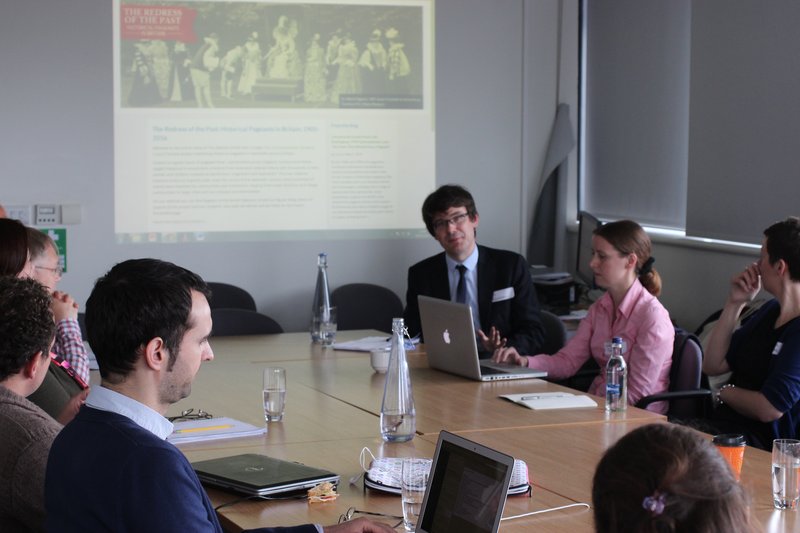Bringing Pageants to the People
Over the past few months the project team has been working hard to establish some basic parameters around the capture of data about each pageant. In other words, what do we need to record, and how?
This is an ongoing process, and it is an important one for us to get right because this will shape the way in which our pageants database develops, and ultimately determine the information and features we can offer on the final website. We want to be sure not only that we can create a valuable research resource, but also use that research to generate public awareness of and enthusiasm for pageantry ( - and hopefully generate a bit of ‘pageant fever’ of our own).
So, at this early stage in the project we have to carefully balance two factors.
- We need to consider what’s actually practical for
us to record given the limited time we have to spend in each archive. We could take the time to record the names of every
individual who performed in a pageant – but we have to weigh this up against
the time it will take to do.
- Just as importantly, we need to think carefully about
how we make the database useful, accessible and engaging. Of course, we have to consider the sorts of
questions that people who already know about historical pageants might want to find
out from our database; but we also need to try and anticipate the overlapping
interests that might draw other users in serendipitously and encourage them to find
out about something new to them.
User Engagement
It’s clear that a prerequisite to achieving the right balance is a nuanced understanding of our potential users, and to begin this process, last Wednesday we ran the project’s first user engagement exercise. We brought together a diverse range of interested parties, which included representatives from local museums, a local historical society, a theatre company, government archives, the British Library, and a range of scholars, all the way from research student to retired senior academic.
During the afternoon formal one-to-one interviews were also conducted with four of the participants, whilst the broader group took part in a wide ranging and lively discussion, which explored (amongst other things):
- Strategies for engaging with a broader public, in
particular by making pageants ‘come to life’ through extensive use of video, colour
photographs and objects where they exist
- Reaching out to the communities where pageants were performed and developing tools to allow local museums to develop activities and events using the materials in the database, and the possibility of organising ‘road show’ activities to catalyse interest
- Exploiting digital platforms such as Pinterest and Flickr for dialogue, both as showcases for pageant history and to stimulate individuals and organisations to participate by exploring their local history
- Ensuring that the people and music of the pageants
are well represented
- The importance of active sustainability and ensuring
that the database will be a persistent and lasting resource.
We are enormously grateful to our participants and very much look forward to working with them as the project evolves.
If you’d like to participate in any user engagement or testing in the future then we’d welcome your involvement - please get in touch!

